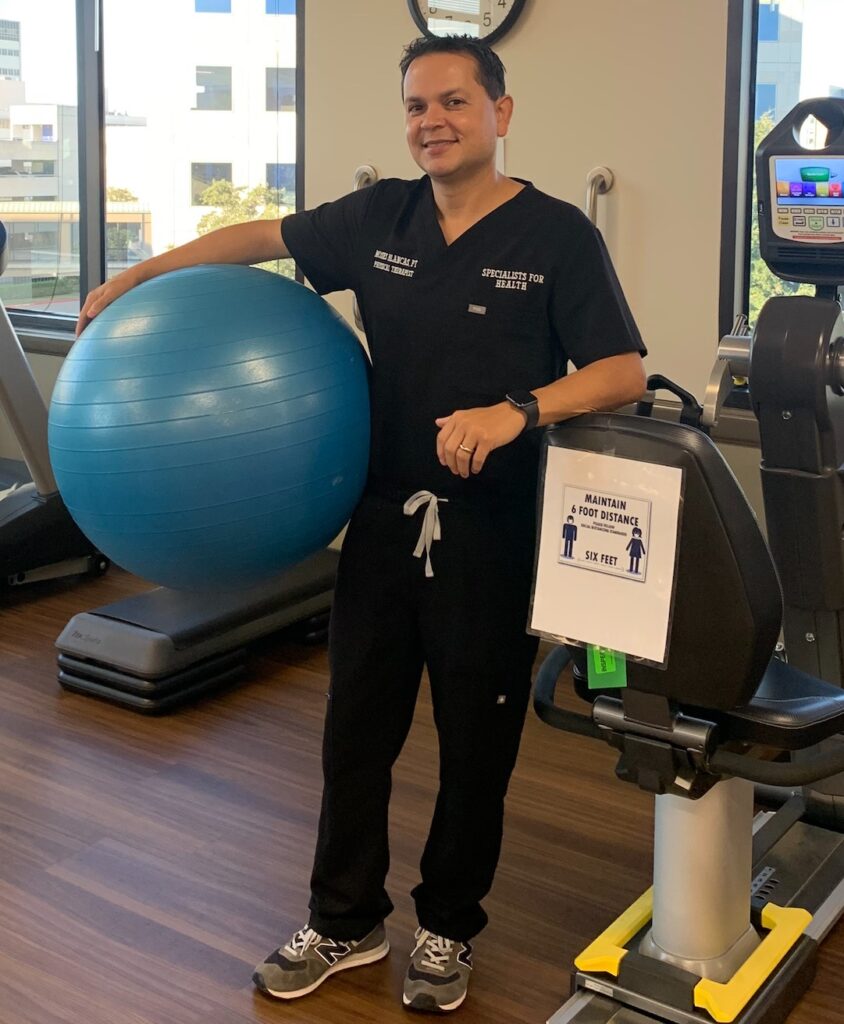

For 18 years, Moses Blancas, lead therapist at the Lee Trevino office of WellMed Specialists for Health in El Paso, Texas, has witnessed the healthy transformations of patients through physical therapy (PT). Everyone from babies to centenarians benefit from PT, but Blancas’ experience trends more to the older end of that spectrum.
“Most patients are looking for pain relief when they walk through our doors,” Blancas says. “Our job is to look for any dysfunction in their movement. We’re looking for problems with muscles and joints, imbalance, or general weakness. Our ultimate goal is to improve patients’ quality of life without the use of drugs.”
That is particularly important because Blancas says most of his patients are already on multiple medications. For the most part, he says, they want to feel less pain by learning how to help themselves. “We have a very successful, comprehensive plan.”
Specifically, Blancas says WellMed’s PT program is different from others because the minute a patient enters the clinic, he or she gets hands-on treatment. “We are stretching and massaging their tight joints and muscles,” he says. “Plus, we use dry needling, which has proved very powerful for pain management.”
Dry needling treats muscle tissue, and its goal is to reduce pain, inactivate trigger points and restore function. Trigger points are tight bands in the muscles that restrict movement, and it is into these that thin needles are pushed to alleviate pain.
The most common ailment Blancas sees in his clinic is low back pain, however, it’s not the only issue he and his team treat. Blancas says they see patients with vertigo, dizziness and post-stroke weakness. Many of his clients are post-orthopedic surgery patients who have undergone cervical spine fusions, carpal tunnel release, rotator cuff repairs and total shoulder replacements to name just a few. “We have seen every type of orthopedic condition in our clinic,” he says.
If that were not enough, as COVID permeated the nation, it created another set of PT patients. Blancas explains that older patients who suffered with coronavirus during its first wave were often hospitalized for extended periods of time and ended up with lung damage. Many were not on oxygen prior to the pandemic but must use it now. Some come in wheelchairs, weakened by inactivity during their prolonged hospital stays.
“With those patients, we have to strengthen their cardiovascular and musculoskeletal systems,” Blancas says. “It is a slow and tedious process, but for many, it is possible to improve dramatically.”
It is not a given that every older person will experience pain or need PT as they continue to age. An active lifestyle is the best prevention, explains Blancas. He says yoga in particular has been proven to prevent and manage back pain. Additionally, he recommends water aerobics and aquatic therapy. “Water workouts can provide a good cardio challenge while strengthening muscle groups without adding stress to the joints. In fact, if more patients did this, we wouldn’t see so many injuries,” he stresses.
According to Blancas, a patient is ready to be discharged from PT treatment when they are no longer in pain, or their pain is more controlled. Other signs a patient’s therapy is complete is when they know their home exercises; they’re participating in group exercises on their own and feel safe doing that. “That’s when we feel comfortable discharging them,” Blancas says. “Sometimes it’s not easy to discharge our patients. Many would like to continue PT indefinitely because they feel so much better. That means we’ve done our job.”
October is National Physical Therapy Month
Let’s celebrate and say thank you to all our WellMed physical therapists and PT assistants, our movement experts. They treat our patients with a magic touch and caring compassion that can reduce pain; help patients avoid medications and surgery, recover from surgery, and lead a more functional and fit life.
